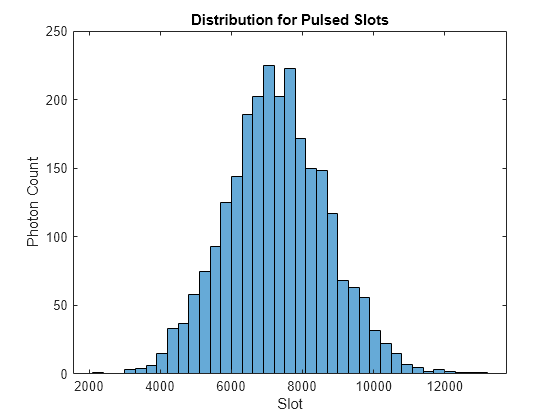dsocWebbGaussianChannel
Create deep space optical communications Webb Gaussian or Gaussian channel
Since R2024b
Description
The dsocWebbGaussianChannel
System object™ creates a deep space optical communications (DSOC) channel, based on the value
set for the ApproximationMethod property.
Use dsocWebbGaussianChannel to model a full avalanche photo detector (APD) output,
which includes thermal noise and surface leakage current, using Webb Gaussian or Gaussian
approximation, and to obtain the estimate photon count in each slot.
For more information, see Algorithms.
To create a DSOC Webb Gaussian or Gaussian channel:
Create the
dsocWebbGaussianChannelobject and set its properties.Call the object with arguments, as if it were a function.
To learn more about how System objects work, see What Are System Objects?
Creation
Description
chan = dsocWebbGaussianChannel
chan = dsocWebbGaussianChannel(Name=Value)dsocWebbGaussianChannel(ApproximationMethod="Gaussian") sets the
approximation method to "Gaussian" and creates a DSOC Gaussian
channel.
Properties
Usage
Syntax
Description
Input Arguments
Output Arguments
Object Functions
To use an object function, specify the
System object as the first input argument. For
example, to release system resources of a System object named obj, use
this syntax:
release(obj)
Examples
Algorithms
References
[1] Dolinar, S., D. Divsalar, J. Hamkins, and F. Pollara. "Capacity of pulse-position modulation (PPM) on Gaussian and Webb Channels." August 15, 2020.
[2] Ascheid, G. “On the Generation of WMC-Distributed Random Numbers.” IEEE Transactions on Communications 38, no. 12 (December 1990): 2117–18.
Extended Capabilities
Version History
Introduced in R2024b

